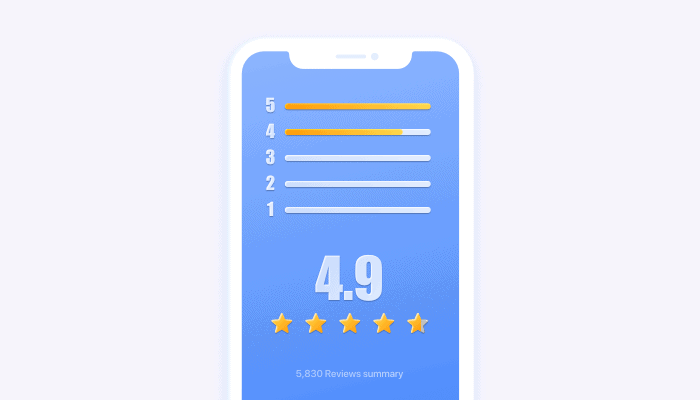
Customer engagement is critical for gaining customer loyalty, user retention, and improved outcomes. The key question then becomes, how best to enhance customer engagement?
Many enterprises tend to rely on using a variety of customer engagement channels and tools. But such a multi-pronged approach creates different data stores and can lead to resource exhaustion and difficulty in data collection and analysis. Using multiple social media platforms as publishing platforms to interact with and message customers is not resource-efficient for small or medium-sized companies.
To solve these problems, some enterprises choose to build custom customer engagement tools from scratch, but this can be time and resource-consuming. Others may use custom build tools and apps, although many of these are not built with a central approach to aid in data collection and understanding the end customer.
Using an infrastructure service like QuickBlox provides a cost-effective means for building powerful communication solutions that improve user experience and increase customer engagement and brand loyalty.
QuickBlox is a communication platform as a service (CPaaS) for enterprises that provides all the necessary tools to build real-time custom messaging apps, including voice chat API and video chat API for website, android, and iOS.
With QuickBlox, developers can build and customize the end product according to the enterprise requirements in no time and with minimum cost.
QuickBlox allows developers to create instant messaging and video calling / conferencing apps with ease without the need to worry about server setup, security, and privacy of data.
It offers some software development kits (SDKs) for building mobile, desktop, or web applications. Furthermore, developers can extend existing software or websites with QuickBlox messaging services.
In this article, we will explore how to use QuickBlox to provide an awesome user experience, increase customer loyalty and user retention with the advantage of centralization and privacy.
How can you use QuickBlox to increase customer engagement and improve the quality of service?
Web Widgets
A web widget or an embedded web widget is a small application built to integrate with websites and web applications.
Web widgets can extend the website functionality by adding a messaging board, contact form, or a chat client that engages with customers directly.
QuickBlox offers JavaScript and React SDK that helps developers build dynamic real-time interactive web widgets with ease.
Integrating web widgets into static or dynamic websites transforms them into interactive environments that enrich customers’ engagement.
As an example, QuickBlox can be used to create custom support messaging widget for landing pages to gather information about positional customers.
Video calling and conferencing
Video calling with customers personalizes their experience as it increases the quality of support provided. Using QuickBlox SDK developers can build an HD video calling desktop, web, or mobile application.
QuickBlox supports WebRTC (Web Real-Time Communication) which enables peer-to-peer communication for browsers and mobile for video, audio, and data transfers.
The support of WebRTC is available in all QuickBlox SDKs as native iOS/ Android SDKs, Flutter SDK, React Native SDK, JavaScript SDK as well as REST-API.
With any of QuickBlox SDKs or REST API, developers can build custom video communication systems for customer support or for marketing activities.
Video communication personalizes the user experience leading to improved customer experience and loyalty.
Personalized user experience
A personalized user engagement strategy increases customer trust in apps and products. Peer-to-peer chat with support personnel or with automated AI-powered bots enriches the customer’s personalized experience.
Using QuickBlox, developers can build custom apps with a customized workflow that fits enterprise customer engagement strategy. They also can integrate natural language processing and artificial intelligence in a bot with services like Google’s Dialog Flow with ease.
Virtual rooms
Virtual room is a simulated waiting room experience for users. It can be used, for example, in healthcare, HR, finance, and banking.
In the current COVID-19 outbreak, virtual room applications are trending especially for job interviews and remote medical consultation.
QuickBlox is used as a base for Q-Consultation, a real-time virtual room system.
Integration with CRM
Customer relation management systems are built to facilitate customer interaction and increased customer engagement.
QuickBlox can extend CRM systems with real-time messaging functionalities. Also, developers can integrate QuickBlox-based apps easily with CRM solutions.
Integration with static websites
Many enterprises use static generators to create websites quickly and efficiently. However, statically generated websites do not have tools to engage with uses.
The same goes for many flat-file CMS solutions.
With QuickBlox, developers can build engagement tools for these types of websites in the form of widgets or a web component.
For example, the app can be a real-time messaging app with a customer service ticketing system.
Mobile apps
With QuickBlox mobile SDKs, developers can extend their mobile apps with instant messaging, push notification, and file transfer functionalities.
QuickBlox offers native mobile SDKs alongside other mobile-specific SDKs for mobile developments like React Native and Flutter.
A personalized mobile app enriches the user experience, increases their satisfaction, and leads to user retention and better outcomes.
Extending customer-engagement tools with QuickBlox functionalities
Hence, with QuickBlox’s rich development tools, developers can extend enterprise software by integrating QuickBlox messaging, video conferencing, calling, file-sharing, and more.
Additionally, QuickBlox can work as a middle-layer to exchange sensitive data and messages among users across enterprise apps, resulting in seamless communication and enhanced collaboration between enterprise departments.
A central data repository
QuickBlox depends on a central secure database that records all events and messages. A central data repository is a practical solution to build several connected apps at once. It is also beneficial for analyzing customer engagements with enterprise analytical CRM.
Using one data source for building several apps will save enterprises resources, including hardware, developers, DevOps, security specialists, and time.
Conclusion
QuickBlox offers functionalities and tools to build enterprise-class customer engagement applications with several advantages for the enterprise. Additionally, developers can integrate created tools with enterprise management applications like CRM, ERP, and HIS systems. Unlike other more expensive or complex multi-platform approaches, QuickBlox provides a simple, cost-efficient, and robust communication solution to promote the level of customer engagement necessary to ensure brand loyalty.






